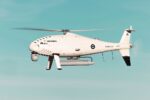Amid rising tensions on the Korean Peninsula and a growing arsenal of advanced missile systems in North Korea, a senior South Korean official has suggested that a meeting between Washington and Pyongyang could take place before the end of 2024. This potential diplomatic thaw comes as North Korea accelerates its development of intercontinental ballistic missiles (ICBMs), submarine-launched ballistic missiles (SLBMs), and tactical nuclear delivery systems—posing significant challenges to regional air and missile defense architectures.
Renewed Diplomatic Signals Amid Military Escalation
South Korean National Security Adviser Chang Ho-jin recently stated that there is a “possibility” of dialogue between the United States and North Korea this year. While no formal talks have been announced by either Washington or Pyongyang, Chang’s comments follow a series of provocative North Korean military developments—including multiple ballistic missile launches in early 2024—and come amid speculation that both sides may be recalibrating their strategic postures ahead of the U.S. presidential election.
Chang emphasized South Korea’s commitment to denuclearization through diplomacy but reiterated Seoul’s support for strengthening deterrence through trilateral cooperation with the U.S. and Japan. These remarks coincide with increased joint military exercises among the three allies aimed at countering North Korean threats across multiple domains—air defense, anti-submarine warfare (ASW), cyber resilience, and C4ISR integration.
North Korea’s Expanding Missile Arsenal
In recent years—and particularly since 2021—North Korea has accelerated its missile development programs under Kim Jong Un’s “Five-Year Defense Development Plan.” This includes:
- ICBMs: The Hwasong-17 (tested in March 2023) is believed to be capable of striking targets across the continental United States with an estimated range exceeding 13,000 km. It uses a liquid-propellant two-stage configuration with MIRV potential.
- Tactical Nuclear Weapons: Short-range ballistic missiles (SRBMs) such as KN-23 and KN-24 are designed for precision strikes on regional targets like South Korean airbases or command centers. These systems mimic Russian Iskander-M profiles with quasi-ballistic trajectories to evade interception.
- SLBMs: The Pukguksong-3/5 family represents North Korea’s push toward second-strike capability via submarine-launched platforms—though operational deployment remains limited by indigenous submarine constraints.
This rapid diversification increases survivability against preemptive strikes and complicates allied early warning systems. According to a February 2024 UN Panel of Experts report, North Korea continues to procure dual-use components via illicit networks despite sanctions.
Implications for Regional Air and Missile Defense
The evolving threat matrix from Pyongyang has prompted significant upgrades across allied missile defense infrastructures:
- KAMD (Korea Air & Missile Defense): South Korea is expanding its indigenous layered defense system comprising M-SAM (Cheongung-II), L-SAM interceptors under development (with hit-to-kill capability against high-altitude threats), and PAC-3 batteries.
- THAAD Deployment: The Terminal High Altitude Area Defense system deployed by U.S. Forces in Seongju remains controversial domestically but is considered critical for intercepting medium-range ballistic threats.
- Aegis BMD Integration: Both Japan and South Korea are enhancing naval-based ballistic missile defense using Aegis-equipped destroyers capable of SM-3 intercepts.
The challenge lies not only in kinetic interception but also in integrating multi-domain ISR assets—including space-based early warning satellites—to reduce sensor-to-shooter latency against fast-evolving threats like maneuverable reentry vehicles or hypersonic glide vehicles (HGVs).
C4ISR Modernization as Deterrence Multiplier
The trilateral alliance is increasingly focused on integrating command-and-control architectures across national boundaries to enable real-time data fusion during crises. Key developments include:
- Tactical Data Link Interoperability: Efforts are underway to ensure seamless Link-16 communications among U.S., ROKAF (Republic of Korea Air Force), and JASDF assets during joint operations.
- Crisis Simulation & AI Decision Support: Joint war-gaming exercises now incorporate AI-assisted decision trees for faster threat classification based on ISR feeds from UAVs, SIGINT platforms, and radar arrays such as Green Pine or AN/TPY-2.
This modernization aims not only at improving response time but also at deterring escalation by demonstrating credible integrated capabilities that can neutralize DPRK first-strike options without relying solely on nuclear retaliation doctrines.
The China-Russia Factor in Peninsula Stability
The strategic calculus surrounding any future U.S.-DPRK negotiations cannot ignore the growing alignment between Pyongyang, Moscow, and Beijing. In recent months:
- Munitions Transfers: Open-source intelligence suggests that North Korean artillery shells have been transferred to Russia for use in Ukraine—a potential violation of UN sanctions—with possible quid pro quo involving satellite technology or advanced propulsion components from Russia back to DPRK.
- Sino-DPRK Space Cooperation: Following Kim Jong Un’s November visit to Russia’s Vostochny Cosmodrome, analysts speculate about Chinese assistance in orbital launch capabilities under civilian cover—raising concerns about dual-use proliferation into ICBM reentry vehicle testing regimes.
This geopolitical entanglement complicates any bilateral engagement between Washington and Pyongyang by introducing third-party leverage points that may undermine denuclearization incentives or enforcement mechanisms post-agreement.
No Talks Without Tech Verification Mechanisms
If talks resume later this year—as hinted by Seoul—they will likely face skepticism unless accompanied by verifiable constraints on DPRK’s weapons programs. Key verification challenges include:
- Lack of baseline transparency on warhead inventory or fissile material stockpile;
- No access for IAEA inspectors since early 2009;
- Diversified basing modes including rail-mobile launchers complicating monitoring;
A meaningful arms control framework would need robust technical mechanisms including remote sensing verification tools (e.g., synthetic aperture radar monitoring), biometric tagging of warheads/components under storage protocols akin to START treaties, and persistent ISR coverage over known test ranges like Sohae or Tongchang-ri.
Conclusion: Diplomacy Must Match Deterrence With Tech Depth
The possibility of renewed U.S.-DPRK talks offers a diplomatic opening—but one shaped profoundly by military-technological realities on the ground. As Pyongyang fields increasingly sophisticated delivery systems backed by asymmetric cyber-electronic warfare capabilities, any negotiation must be grounded not just in political will but also verifiable technical limits supported by modern C4ISR infrastructure among allies. Absent such rigorously enforced frameworks, diplomacy risks becoming a pause rather than a pivot point in Northeast Asia’s evolving security architecture.









